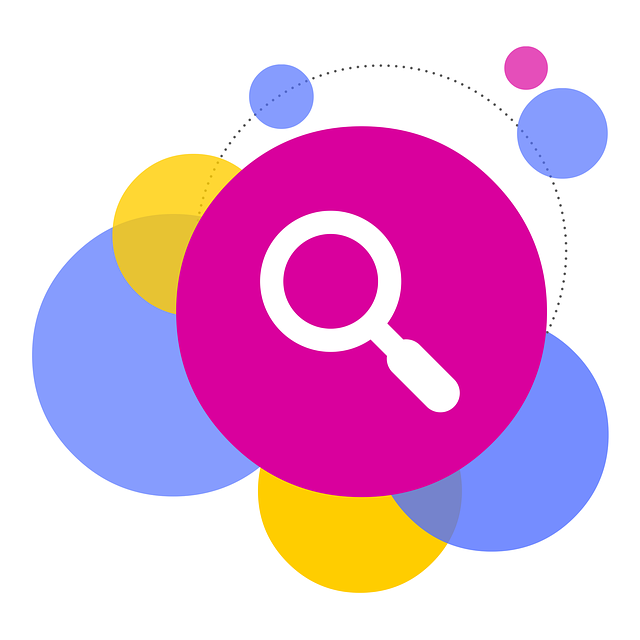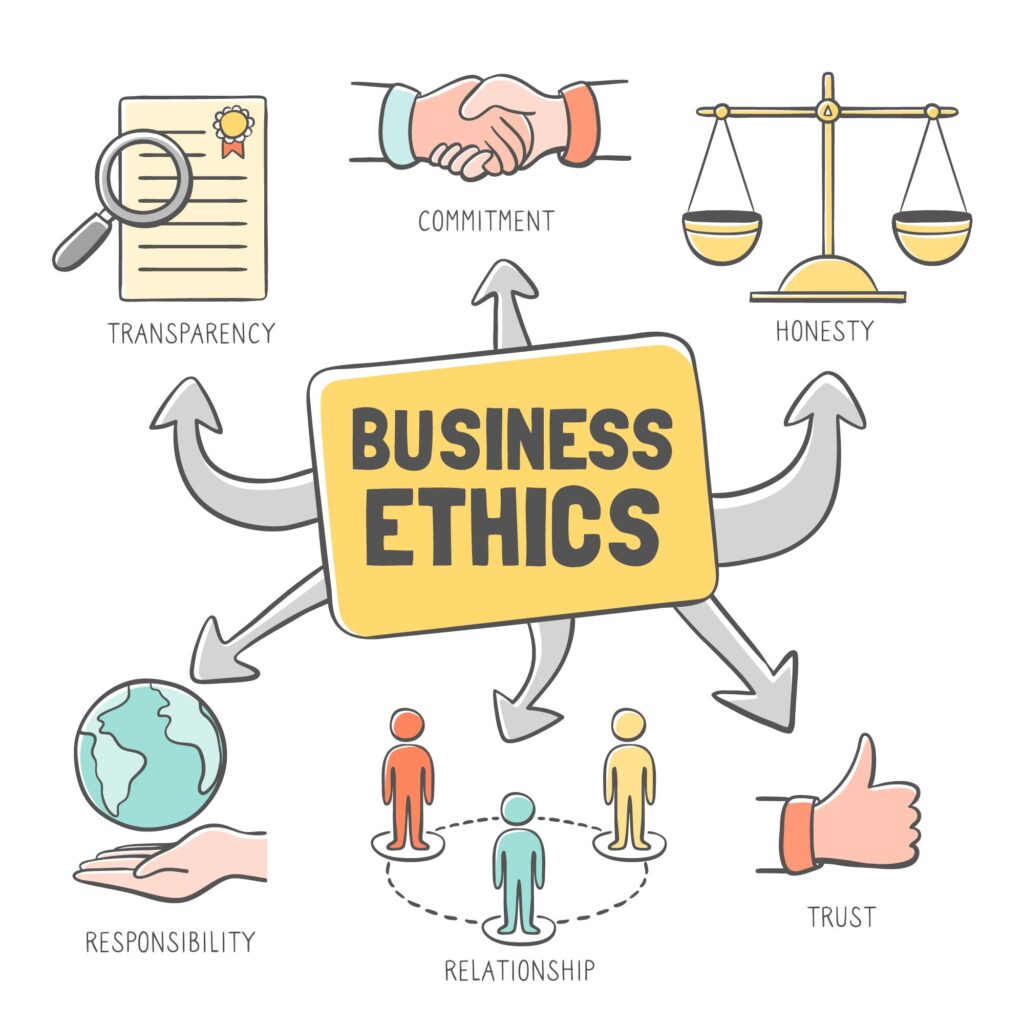Introduction
In the rapidly evolving landscape decoding healthcare market access & collaboration has become the cornerstone of success. Welcome to our expert guide, “Decoding Healthcare Market Access,” where we delve into the intricate world of healthcare market access and explore the strategies, trends, and tools that shape it.
This comprehensive guide is designed to provide valuable insights and actionable advice to professionals seeking to master the intricate dance of healthcare market access and collaboration. So, let’s embark on this journey together, as we decode the intricacies of Healthcare Market and Collaboration in the ever-evolving world of healthcare and pharmaceuticals.
Join us in this engaging podcast as we delve into the insights shared by industry experts Stefan Repin and Rabab Khodary. They bring their extensive knowledge to the table, discussing crucial topics that are shaping the pharmaceutical landscape. Check the podcast link below.
Ep.17: Shaping Market Access: Navigating Complexities and Collaboration in Healthcare
The goal of this blog post is to introduce people to the healthcare market , emotional intelligence, Market access strategies, patient access etc in detail, which we have already discussed in our podcast in which our speakers ‘Stefan Repin’ and ‘Rabab Khodary’ interact. The podcast is organized by Platforce, a pharma CRM Company .
Get a free demo of Platforce pharma CRM, schedule online today.
- The Impact of Technology on the Healthcare Market
- The Rise of Personalized Medicine
- Understanding the Healthcare Market and Collaboration
- Mergers and Acquisitions in the Healthcare Industry
- Healthcare Marketing Strategies in 2023
- Regulatory Changes and Challenges
- Advice for Upcoming Professionals
- Frequently Asked Questions
The Impact of Technology on the Healthcare Market

Imagine a world where doctors can diagnose diseases with pinpoint accuracy, thanks to artificial intelligence, or where big data provides insights for informed decision-making, optimizing patient care. That’s the reality of the healthcare market in 2023! Telemedicine and remote patient monitoring enable care to be provided from any location, expanding access and ensuring that no one is left behind.
As a result, businesses in the pharmaceutical industry and life sciences sectors can unlock their full potential by leveraging technology to operate with lower costs, shorter timelines, and improved innovation. Investors expect growth and profitability to be achieved simultaneously, and healthcare providers must focus on their own business strategies to meet these expectations.
Comprehensive Healthcare Expertise: A Spectrum of Skills
Before delving into the intricacies of market access, it’s crucial to understand the spectrum of skills required. From pharma marketing to analytics and CRM customization, a well-rounded skill set is essential. and learn how it plays a vital role in navigating the intricacies of the healthcare industry.
The Intersection of Healthcare Market and Collaboration
Healthcare is a multifaceted ecosystem where a myriad of stakeholders, from clinicians and administrators to pharmaceutical companies and insurers, converge to provide quality care. This intersection is where the healthcare industry thrives, and effective collaboration becomes the linchpin of success.
The Skill Spectrum in Healthcare
Medical Proficiency: At the core of healthcare expertise lies medical knowledge. Physicians, nurses, and specialists form the bedrock of patient care. Their ability to diagnose, treat, and prevent diseases is foundational to the entire healthcare system.
Administrative Acumen: Healthcare administrators manage the operational aspects of healthcare facilities. Their skills ensure smooth day-to-day operations, compliance with regulations, and efficient resource allocation.
Pharma Insights: In an era of advanced pharmaceuticals, understanding the latest pharma trends is crucial. Healthcare professionals must collaborate with pharmaceutical companies to provide patients with the best treatment options.
Collaborative Competence: Collaboration doesn’t happen in isolation. Healthcare experts need strong collaborative skills to work cohesively with diverse teams of professionals, bridging gaps and ensuring holistic patient care.
Data-Driven Decision-Making: With the advent of healthcare analytics, data-driven decision-making is essential. Professionals skilled in analytics can derive insights that optimise patient care and resource allocation.
Patient Engagement: Building online patient communities and fostering patient engagement are integral to healthcare marketing. Effective communication is vital in educating patients and building trust.
Regulatory Awareness: Healthcare professionals need to navigate complex regulatory environments. Staying informed about regulatory changes ensures compliance and minimises risks.
Artificial Intelligence in Diagnosis and Treatment
Artificial intelligence (AI), including machine learning, serves as a game changer in disease diagnosis, employing data analysis for enhancing diagnostic precision. From detecting lung cancer based on CT scans to assessing the risk of heart diseases, AI applications are transforming the healthcare landscape.
In addition, AI significantly streamline administrative tasks, boost patient monitoring, and consequently, improve patient outcomes. Healthcare professionals can stay updated on the latest AI advancements through online courses and Facebook groups, where they can connect and share experiences with fellow experts.
The future of healthcare is here, and AI is at the forefront!
Big Data and Analytics for Decision-Making

Effectively utilized, big data and analytics provide deeper insight into patient care and treatment strategies, facilitating data-driven decisions by healthcare providers. Harnessing the power of big data, providers can enhance the healthcare value chain, which leads to streamlined operations and better patient outcomes.
Healthcare professionals can learn how to effectively use big data in their practice through online courses. Additionally, Facebook groups can serve as a platform for professionals to discuss and share insights, fostering collaboration and continuous learning.
Telemedicine and Remote Patient Monitoring
The COVID-19 pandemic has undoubtedly accelerated the growth and adoption of telemedicine and remote patient monitoring. These technologies have allowed small teams of healthcare professionals to manage larger patient populations, providing accessible healthcare to patients regardless of location.
Successful implementation of telemedicine and remote patient monitoring requires healthcare providers to make investments in digital technologies, including broadband internet connections, audio-video capable devices, and telehealth software or platforms. With the right tools in place, patients can enjoy a seamless customer experience, while healthcare providers can achieve their business goals and expand their reach.
The Rise of Personalized Medicine
The popularity of personalized medicine is on the rise, with genomic medicine and wearable health devices facilitating customized treatments and preventive care. Utilizing a patient’s distinct genetic profile, combined with lifestyle and environmental aspects, healthcare providers can determine the most efficient treatments, minimize negative reactions to medications, and thus, elevate the overall patient care.
Exciting developments in genomic medicine and wearable health devices are empowering patients to take control of their health, providing valuable data for personalized care. The future of healthcare is not only about treating illnesses but also about understanding each individual’s unique needs and preferences.
Understanding the Healthcare Market and Collaboration
In podcast speakers explain the healthcare market is a complex ecosystem influenced by numerous factors, including regulatory changes, technological advancements, and shifting patient demographics. As pharmaceutical companies seek to introduce innovative therapies and treatments, understanding this dynamic landscape is crucial.
Collaboration as a Cornerstone:
Collaboration within the healthcare sector is not merely a buzzword; it’s a cornerstone of successful market access. Building strong relationships with key players, such as healthcare providers, payers, and patient advocacy groups, can pave the way for a smoother market entry.
Key Challenges in Pharmaceutical Market Access
Navigating Regulatory Hurdles:
One of the foremost challenges in pharmaceutical market access is navigating the intricate web of regulations and compliance standards. Different regions and countries have their own sets of rules, and staying abreast of these changes is imperative.
Economic and Pricing Pressures:
Pharmaceutical pricing and reimbursement are under increasing scrutiny. Companies must carefully assess their pricing strategies to ensure affordability while maintaining profitability.
Demonstrating Value:
In an era of value-based care, demonstrating the value of pharmaceutical products is essential. Companies need to provide robust clinical and economic evidence to support their offerings.
Value-Based Healthcare Models

Value-based healthcare models, such as accountable care organizations (ACOs) and bundled payments, are gaining popularity as they prioritize improving patient outcomes and cost efficiency. These models incentivize providers to prioritize quality of care over quantity of services, resulting in better patient outcomes.
Studies have shown that value-based models can lead to reductions in total expenditures and generate cost savings. By embracing these models, healthcare organizations can not only improve their bottom line but also ensure that they are providing the best possible care to their patients.
Accountable Care Organizations (ACOs)
Accountable Care Organizations (ACOs) are innovative groups of clinicians, hospitals, and other healthcare providers that work together to provide coordinated, high-quality care to patients. ACOs place financial responsibility on providers with the goal of improving patient management and reducing unnecessary healthcare costs, all while aiming to improve the quality of care and outcomes for patients.
ACOs have demonstrated modest savings, with most evaluations estimating 1 percent to 2 percent reductions in spending. By fostering collaboration and coordination among healthcare providers, ACOs can drive improvements in patient care and contribute to significant cost savings.
Market Access Strategies in Saudi Arabia for Pharma Professionals (Asked by Stephen)
“Rabab“ – Before we explore the strategy, it’s essential to comprehend the healthcare market in Saudi Arabia. The Kingdom has been actively working towards enhancing its healthcare infrastructure and services, making it an attractive hub for pharmaceutical companies. Collaboration is at the core of these efforts, with stakeholders working together to improve patient access to quality healthcare.
Pharma Marketing: Tailored Strategies for Saudi Arabia
Pharma marketing in Saudi Arabia necessitates a deep understanding of local regulations and cultural nuances. To succeed, professionals must focus on building strong relationships with key stakeholders, including healthcare providers, regulatory authorities, and patients.
Here are some essential strategies to consider:
Local Partnerships: Collaborate with local healthcare providers and institutions to establish a robust presence and distribution network.
Regulatory Compliance: Stay updated with the evolving regulatory landscape in Saudi Arabia. Ensure that your marketing practices align with local laws and regulations.
Patient-Centric Approach: Engage patients and understand their unique needs and preferences. Building trust and providing value-added services can enhance patient loyalty.
Data-Driven Decision-Making: Leverage pharma analytics to gain insights into market trends and consumer behavior. This data can guide your marketing efforts effectively.
Customizable Pharma CRM: Implement a customizable pharma CRM system to manage customer relationships, streamline communication, and monitor sales and marketing activities.
Closed-Loop Marketing: Utilize closed-loop marketing to gather feedback from healthcare professionals and patients, allowing you to refine your strategies continuously.
Collaborative Initiatives in Healthcare Market Access
Collaboration is a central theme in Saudi Arabia’s healthcare market access strategy. Pharma professionals can actively engage in collaborative initiatives to foster trust and improve patient access:
Public-Private Partnerships (PPPs): Explore opportunities for PPPs with the Saudi government to expand access to pharmaceutical products and services.
Building Online Patient Communities: Create online communities and platforms for patients to share their experiences and connect with healthcare providers and pharmaceutical companies.
Educational Initiatives: Organize workshops, seminars, and educational programs to inform healthcare professionals about the latest pharma trends and innovations.
Value-Based Care: Focus on value-based care models that prioritize patient outcomes and cost-effectiveness, aligning your strategies with Saudi Arabia’s healthcare goals.
Mergers and Acquisitions in the Healthcare Industry
Mergers and acquisitions continue to shape the healthcare industry, with pharmaceutical companies partnering with biotech startups and hospital systems consolidating. These partnerships and consolidations can:
- Extend the reach of healthcare organizations
- Acquire new technologies
- Boost market share
- Drive innovation and growth in the healthcare market.
As the healthcare landscape evolves, organizations must adapt their strategies to remain competitive and successful. By embracing partnerships, mergers, and acquisitions, healthcare organizations can ensure their continued growth and success in the rapidly changing industry.
Pharmaceutical Companies and Biotech Startups
Partnerships between pharmaceutical companies and biotech startups can drive innovation and growth in the healthcare market. These partnerships provide:
- Access to innovative technologies and research
- A pipeline of potential new drugs and therapies
- A way to reduce the risks associated with drug development
Some of the most groundbreaking projects or products that have come from partnerships between pharmaceutical companies and biotech startups include:
- The development of novel therapies
- Gene editing technologies
- Personalized medicine
- Drug delivery systems
- Digital health solutions
By forming strategic alliances, pharma companies and biotech startups can unlock new opportunities and revolutionize healthcare through the use of a new platform, often leveraging the agility of a small team.
Hospital Systems Consolidation
Hospital systems consolidation can create a larger, more efficient system that can provide better care to patients and reduce costs. By merging multiple hospitals or health systems into one larger system, healthcare organizations can offer improved care and cost savings.
However, hospital systems consolidation can also lead to:
- Higher healthcare prices
- Worse outcomes for patients
- Harm to competition
- Reduced care coordination
- A negative impact on patient experiences
As healthcare organizations consider consolidating, they must carefully weigh the potential benefits and drawbacks to ensure the best possible outcomes for patients and providers alike.
Healthcare Marketing Strategies in 2023
In 2023, healthcare marketing strategies will pivot around content marketing, engagement on social media, and a patient-first approach. Navigating the rapidly evolving landscape, healthcare organizations need to adopt digital innovation and a customer-first business model to ensure success in pharma marketing.
By leveraging online communities, healthcare providers can share valuable health information, encourage one another, and stay motivated within their own community. In doing so, healthcare organizations can build credibility and trust with their patients, ultimately driving growth and success in the healthcare market. Joining an online community can be a valuable step for healthcare professionals to stay connected and informed.
Content Marketing and Thought Leadership
Content marketing and thought leadership can help healthcare organizations establish credibility and trust with patients by providing valuable and educational content, establishing the organization as an industry expert, and spreading accurate and reliable information.
Through compelling content and thought leadership, healthcare organizations can build personal relationships with patients and offer positive patient experiences, ultimately leading to improved patient satisfaction and brand loyalty.
Social Media Engagement
Social media engagement is a powerful tool for healthcare providers to connect with patients, share valuable information, and build brand loyalty. By engaging with patients on social media, healthcare providers can increase visibility, improve customer service, and enhance patient satisfaction.
To ensure successful engagement with patients on social media, healthcare providers should create a social media policy, respond to comments promptly, and vigilantly monitor for inappropriate content. By embracing social media engagement, healthcare organizations can create meaningful connections with patients and foster a sense of community.
Pharma Marketing’s Role in Shaping Patient Access
By aligning Pharma Marketing strategies with the broader healthcare industry, pharmaceutical companies can proactively address patient access challenges. They can not only promote their products but also contribute to better healthcare outcomes by ensuring that patients receive the treatments they need when they need them.
In conclusion, strategic alignment is the compass that guides Pharma Marketing in improving patient access and building online patient communities. By understanding and collaborating with healthcare stakeholders, pharmaceutical companies can navigate the complex healthcare landscape and make a meaningful impact on patients’ lives.
By adhering to the principles of strategic alignment, Pharma Marketing can not only enhance patient access but also position itself as a valuable partner in the broader healthcare ecosystem. In doing so, it will continue to play a vital role in shaping the future of healthcare.
Regulatory Changes and Challenges
In 2023, the healthcare market will be influenced by regulatory changes and challenges, including drug pricing reforms and data privacy concerns. Navigating complex regulations, healthcare organizations must adapt their strategies to ensure compliance and safeguard patient information.
As the healthcare landscape continues to evolve, organizations must stay ahead of the curve by keeping up with evolving regulatory requirements and adopting state-of-the-art security measures to protect patient data.
Data Privacy and Security
Data privacy and security are of paramount importance in healthcare, with organizations needing to navigate complex regulations to protect patient information. Some essential steps to protect patient information include:
- Adhering to regulations such as GDPR and HIPAA
- Implementing robust encryption and secure communication protocols
- Implementing strong security measures to prevent unauthorized access, breaches, or cyberattacks.
Advice for Upcoming Professionals in Pharma Marketing and Trends (asked by Stephen Repin)
“Rabab” saying for upcoming professionals in pharma marketing and trends. This advice section offers valuable tips and guidance to kick start your career.
In conclusion, the healthcare market access landscape is multifaceted, but with the right strategies, skills, and leadership, success is within reach. Embrace the insights shared in this comprehensive guide, and you’ll be well-equipped to decode healthcare market access, collaborate effectively, and thrive in this dynamic industry.
Remember, success in pharmaceutical marketing and healthcare market access hinges on staying informed about the latest trends, leveraging pharma analytics, and adopting customized CRM solutions. By incorporating these strategies and skills, you can position yourself as a leader in this vital field.
Frequently Asked Questions
What is a health care market?
Health Care Market is a system of individuals, companies and institutions providing health care services to consumers.
Who controls the healthcare market?
The federal government, through CMS, holds significant control over the healthcare market, setting standards for eligibility, coverage, and more. They are the primary protector of health for all Americans.
How is healthcare different from other industries?
Health care stands out from other industries due to its ill-defined product, uncertain outcomes, nonprofit providers, and third party payments.
Why is the healthcare industry important?
The healthcare industry is essential for providing physical and economic health to every person in the U.S. and it must evolve to meet new needs. Healthcare professionals are key to keeping the system running efficiently and enacting vital policies.
What do we mean by collaboration?
Collaboration is a joint effort between two or more people or work groups to create or achieve something together. It involves the ability to work together and contribute towards a shared goal, as well as the potential of producing an outcome better than one that would be achieved alone.
Platforce is the best CRM software for lead generation, order management, sales automation, and task management. Unlike other software, Platforce gives your company all it needs to optimize customer relations and boost customer experience. Try out the Platforce CRM system with a demo or tour now. You can also stay updated on our Youtube and LinkedIn channels.
















